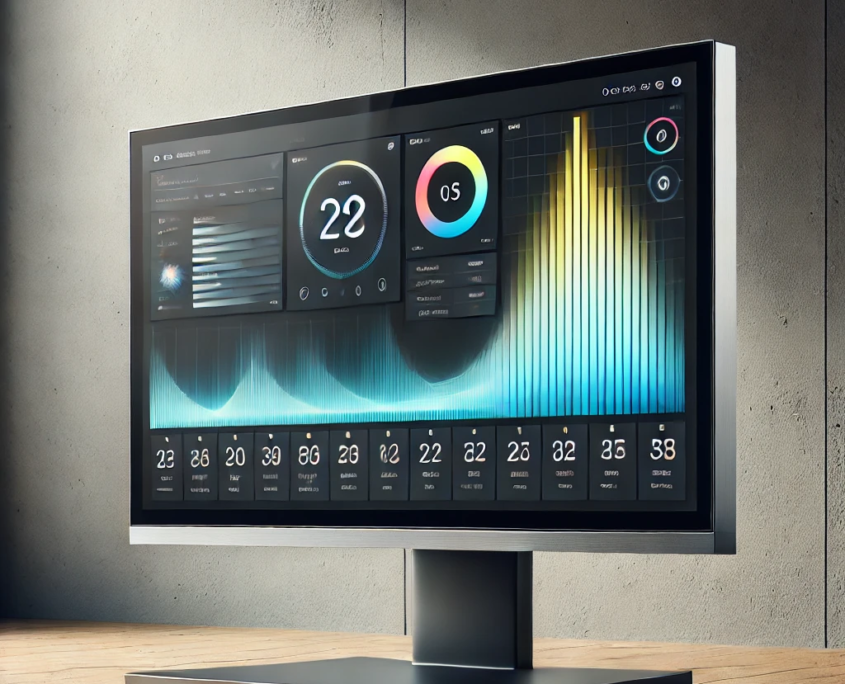Capacitive touch screen learn more
The capacitive touch panel is a type of touchscreen technology that relies on the electrical properties of the human body to detect touch inputs. This technology has become widely popular in devices like smartphones, tablets, and other smart home devices due to its accuracy, sensitivity, and durability. This article will explore how capacitive touch panels work, their key features, applications, and advantages over other touchscreen technologies.
How Capacitive Touch Panels Work
A capacitive touch panel is made from materials like glass coated with a transparent conductor, usually indium tin oxide (ITO). The panel uses the conductive properties of the human body to detect touch. When a user touches the panel, it disturbs the electrostatic field, creating a measurable change in capacitance. The device’s sensors then detect this change to pinpoint the exact location of the touch.
Capacitive touchscreens rely on several layers, including:
Protective layer: Provides physical durability and keeps the touchscreen safe from external damage.
Capacitive layer: Senses the electrical charge from the human body.
Sensing layer: Detects changes in capacitance.
Key Features of Capacitive Touch Panels
1. High Touch Sensitivity: Capacitive touch panels are very responsive, allowing for smooth and accurate touch gestures.
2. MultiTouch Capability: Most capacitive touchscreens support multitouch, enabling users to use multiple fingers simultaneously for gestures like zooming, rotating, and swiping.
3. Durability: The glass surface of capacitive touch panels is resistant to scratches and minor impacts, making it highly durable.
4. Clarity and Brightness: Capacitive panels allow for high light transmission, resulting in clear and vibrant displays.
Applications of Capacitive Touch Panels
Capacitive touch panels have found applications in a variety of fields:
Smartphones and Tablets: Almost all modern smartphones and tablets use capacitive touch panels because of their responsiveness and support for multitouch gestures.
Smart Home Devices: Capacitive touch panels are used in smart thermostats, home control panels, and other smart home interfaces due to their ease of use and sensitivity.
Automotive Touch Controls: Many modern vehicles have integrated capacitive touch panels in their infotainment systems for easier control of music, navigation, and other settings.
Industrial and Medical Devices: Capacitive touch panels are used in industrial machines and medical devices for their robustness, ease of cleaning, and ability to operate with a high level of precision.

Advantages Over Other Touch Technologies
Capacitive touch panels offer several advantages over resistive touch panels, which require pressure to detect input:
No Physical Pressure Required: Capacitive touch panels respond to a light touch, making them easier and more comfortable to use.
Better Visual Quality: Due to their design, capacitive panels offer higher resolution and better brightness, which is why they are preferred for devices where display quality is essential.
MultiTouch Support: Unlike resistive touch panels, capacitive touch panels can detect multiple points of contact at once, which is ideal for gaming, drawing, and interactive applications.
Practical Benefits of Capacitive Touch Panels
1. Enhanced User Experience: Capacitive touch panels provide a smooth, intuitive user experience, especially when interacting with apps that require precise input.
2. Reduced Maintenance Needs: These panels are generally more resistant to wear and tear, reducing the need for frequent repairs or replacements.
3. Seamless Integration with Modern Technology: Capacitive touch technology easily integrates with other advanced features like haptic feedback and pressure sensitivity, which enhance usability.
Future Trends in Capacitive Touch Technology
As technology advances, capacitive touch panels are expected to evolve with new features and improvements. Some emerging trends include:
InDisplay Fingerprint Sensors: Many smartphone manufacturers are now incorporating fingerprint sensors directly into capacitive touch panels for added security.
Haptic Feedback: Providing tactile feedback upon touch is becoming more common, enhancing the user’s interaction by simulating physical button responses.
Integration with Augmented Reality (AR): Capacitive touch technology can be integrated with AR to create more immersive user experiences.
Conclusion
Capacitive touch panels are a versatile and reliable choice for many applications, from consumer electronics to industrial controls. Their responsiveness, durability, and multitouch capabilities make them ideal for the modern user interface. As more devices incorporate capacitive touch panels, they continue to shape how we interact with technology, making our interactions more seamless, intuitive, and enjoyable.
With capacitive touch technology continually advancing, it will likely become even more embedded in our daily lives, further enhancing the functionality of smart home devices, vehicles, and personal electronics.


